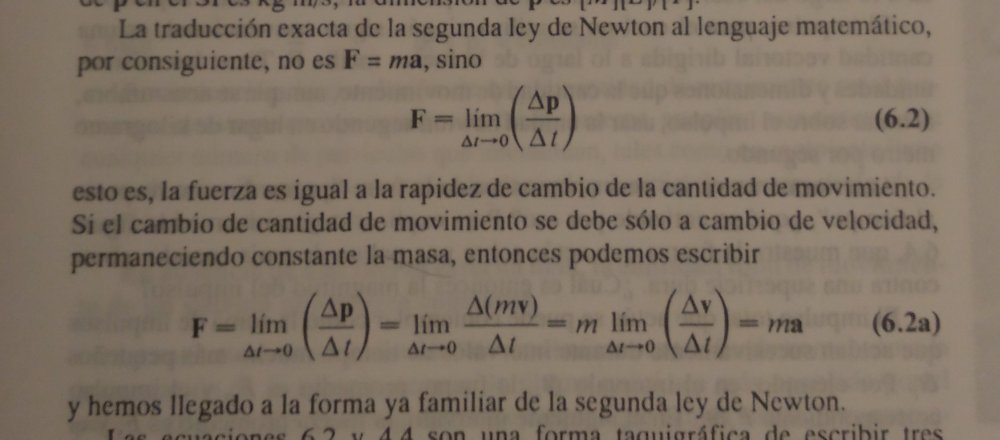-
Posts
916 -
Joined
-
Last visited
-
Days Won
3
Content Type
Profiles
Forums
Events
Everything posted by martillo
-
Then you at least agree that they use the equation F = mdv/dt = ma for the motion of the rocket right? Then there's a problem because in current Physics this equation F = ma is valid for constant values of m only while the rocket has m as a variable mass. Well, if you call an instant "momentary value" fine for me, I can handle that, but in current Physics this equation F = ma is valid for constant values of m only as it is stated for instance in the sample photo of the book I posted for you. Is this what I said right for you?
-
Can you show then where and how they derive the Thrust Force from the Thrust Equation (Equation 1.5) applying F = dp/dt? What I read is just to say (simplified): "the left-hand term is the force as it matches the units". This is to apply F = mdv/dt = ma. Can't you see it? Well, no, I don't have a basic Physics text. I have read that in innumerable physics texts all my life. Starting at college. I only have a Blatt's Physics' text but is not so basic, and in Spanish... I can't believe you are asking me this.
-
What about right below the Equation 1.5. The Thrust Equation. They do not derive the force as F = dp/dt. In spite of this they just say: "The right-hand term depends on the characteristics of the rocket and, like the left-hand term, has the dimensions of a force. This force is called the thrust, and is the reaction force exerted on the rocket by the mass that leaves it." This is to apply F = mdv/dt what is F = ma where m is the (variable) mass of the rocket, very dissimulated, I know. It is wrong in current Physics to apply F = ma on something with variable mass. In current Physics F = ma only applies for constant mass m. But for rockets F = ma works very well (as they function very well, isn't it?) so, it follows that the right equation for variable mass is F = ma. This is the key point in the subject. The link I provided (http://www.braeunig.us/space/propuls.htm) also treats: Combustion and Exhaust Velocity, Specific Impulse, Rocket Engines, Power Cycles, Engine cooling, Solid Rockets Motors, Monopropellant Engines and Staging. You should take a look on it as you would be interested in those things.
-
Where you think I went wrong? m and v as a function of t would give the trajectory of the rocket. That is not necessary to calculate here. The equation connecting v and m is the Thrust Equation we are already considering since the beginning: mdv/dt = -vedm/dt. Solving this equation would give v as a function of m for the considered value of ve if you want that. I don't understand your point of discussion. Please explain. I said the inertial frame considered for the rocket not on the rocket. That is ground.
-
You posted: In case of that applied to the total system m is constant and everything is zero: dpdt = 0 and also dm/dt and dv/dt are zero. The mass is constant, the acceleration would be constant and zero. Just to mention, just for the case, you arrived at mdv/dt = -vdm/dt but this is not the thrust equation. You must decompose the system into rocket and fuel and elaborate. The thrust equation is mdv/dt = -vedm/dt where ve is the constant velocity of the expelled fuel relative to the rocket and m is the mass of the rocket with its contained fuel only.
-
In current Physics is widely considered F = dp/dt and that in the case, and only in the case of constant mass, the equation F = ma applies. Any Physics' textbook says that. So it would be wrong, in current Physics, to apply it on something with variable mass as it is done for rockets, or not? I do not understand how you don't see this. If you consider F = dp/dt then F = mdv/dt + vdm/dt which would be equal to mdv/dt only if dm/dt = 0 what would mean constant mass. Is not for me, for me is very right to apply F = ma always even for variable mass. For me is the right equation of force. That is in the title of the thread.
-
The initial dP/dt = 0 in the total system is always valid since the total mass is constant. What matters is after. As you said: The point is that now we have parts with variable masses and so here is where we must pay much attention which formula is used. It is found that it is used F = ma and not F = dp/dt. This is the point.



